1. Pick your cause
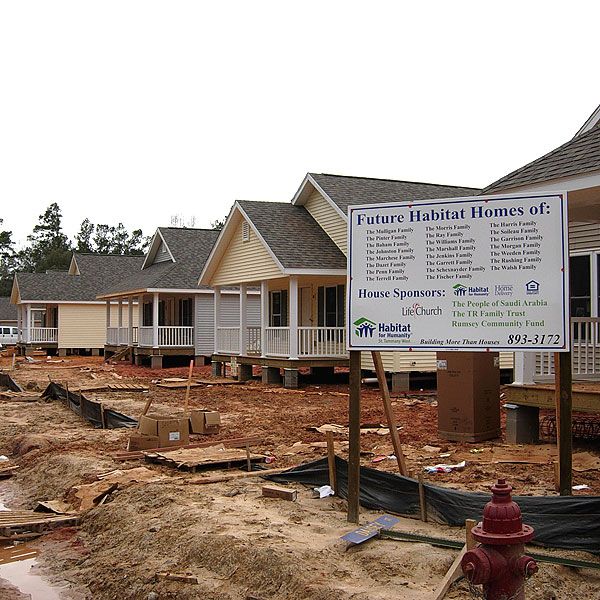
I wanted to do something out of the ordinary to mark my (gulp!) 50th birthday, so I decided to spend that week volunteering with Habitat for Humanity in the New Orleans area. I picked a Habitat affiliate in St. Tammany West parish, on the North Shore of Lake Pontchartrain, where they’re trying something new: While most Habitat houses are “stick” built, from scratch, here, to step up the process in the wake of Hurricane Katrina, the affiliate has teamed up with All American Homes to create a block of 24 modular, or “systems-built,” houses like these, which still have an individual, historic look.
by Leslie Monthan
2. Schedule in some fun
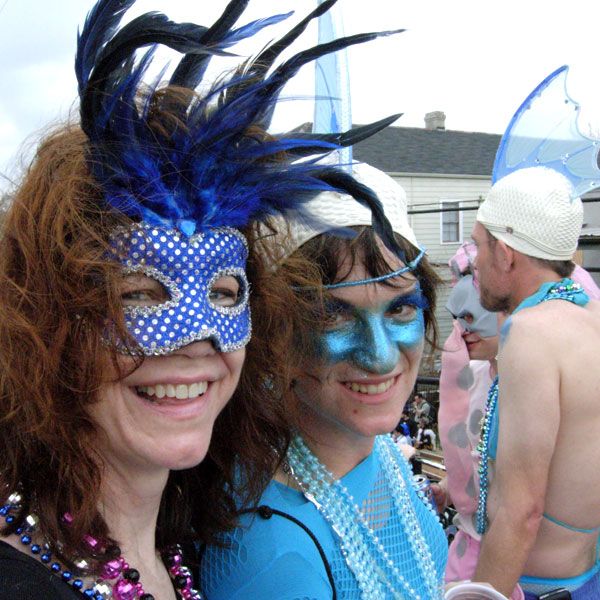
I swear it was purely by coincidence that the only week I could go fell during Mardis Gras! And even Habitat takes the day off. So I joined some friends who let me tag along for New Orleans’s biggest celebration. That’s me on the left, with my fishy-looking guides, Megan Kamerick and Mike Hess. We joined the Society of St. Anne krewe’s walking parade through the French Quarter. Begun in 1969, St. Anne’s is known for its creative and often irreverent costumes.
3. Explore the neighborhood
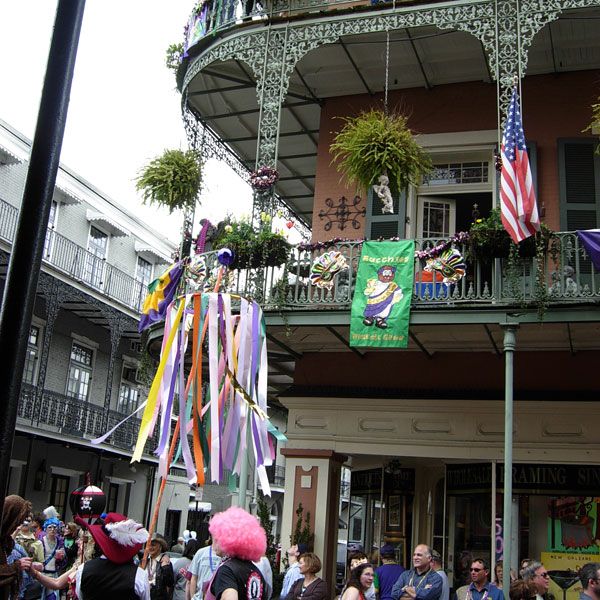
Even without a Mardis Gras parade, if you’re an old-house enthusiast like me, you can get giddy walking through the eccentric charms of a national treasure like the French Quarter. Though the Quarter did suffer wind and water damage during Katrina, for the most part it escaped the terrible flooding after and has recovered much faster than other parts of the city. In fact, many restaurants and inns took the opportunity to upgrade as they repaired.
4. Be prepared to get dirty
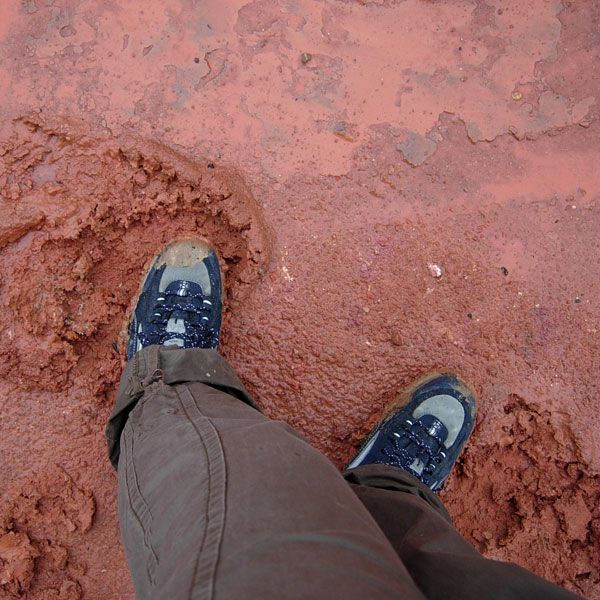
This was the cleanest my feet looked for most of the week. In packing for my trip I’d forgotten how trashed your clothes get on a work site. The mud washed out, but caulk and paint permanently relegated one pair of cargo pants to the painting-clothes category. The shoes, being steel-toed Timberland versions designed for rugged treatment, held up well. But for most of the work a cheap pair of sneaks would have done fine. Word to the wise: Having a second pair of shoes to alternate wearings gives your feet a rest from pressure spots and blisters. I also wished I’d brought bandages for those blisters and other inevitable small ouches.
5. Bring the right equipment
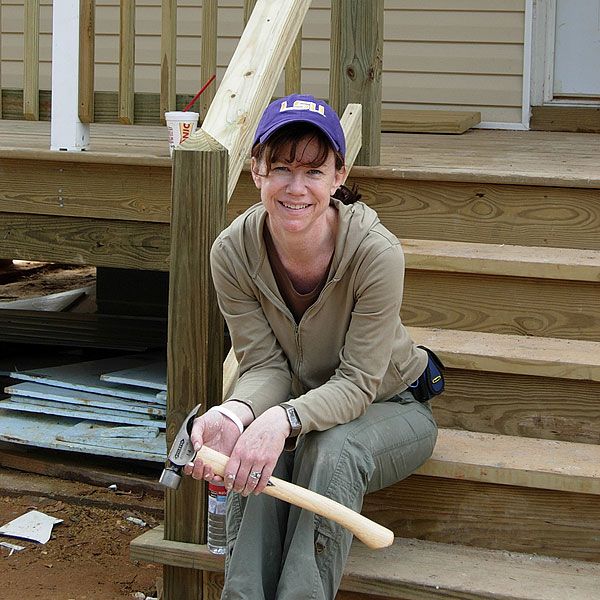
That Stiletto titanium framing hammer in my hands—one of the great benefits of working at TOH is the cool stuff we get to try out—was the envy of the crew because it only weighs 14 ounces but performs like a 22-ounce, which means less arm ache at the end of the day. It wasn’t necessary to bring your own tools on this build, but a tool belt equipped with a good claw hammer, a measuring tape, and a utility knife really came in handy. Sunscreen, hat, and a water bottle are essential for health and comfort during the workday. Ladies: A personal stash of tissues is advisable in case you have to use the portable johns.
6. Know your skills—and your limitations
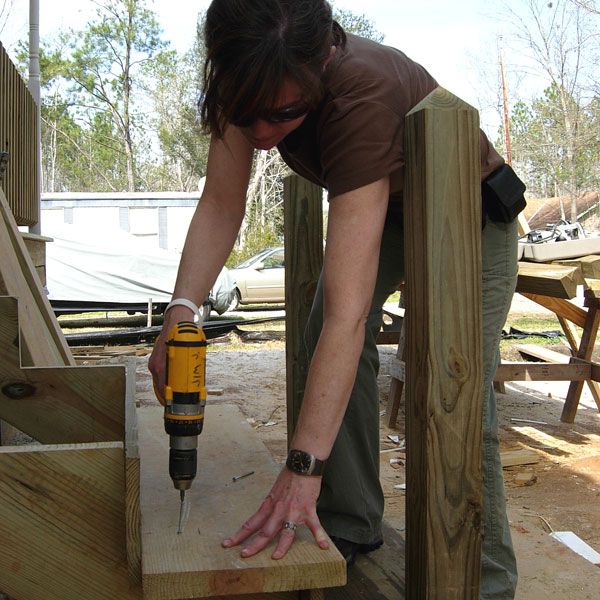
In some ways a Habitat job site is like any other: You spend a fair amount of time fixing things that didn’t get done right the first time. Here, we disassembled the front porch stairs to replace the bottom posts and then reassembled the whole thing. Don’t tell anyone, but our job didn’t quite come out perfectly, either, due to some lack of foresight (not mine, though I’m not naming names). New rule of carpentry: Think about it thrice—then measure twice, cut once.
7. Make sure nobody drops a house on you
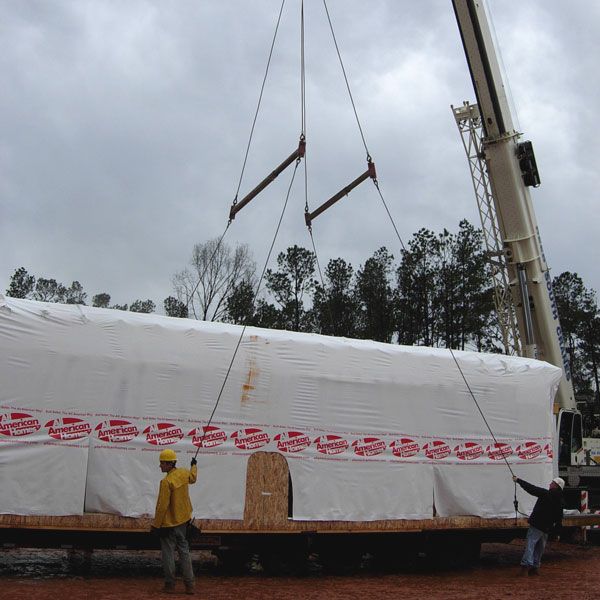
Watching a modular house go in was pretty impressive. Here, one half of a new house is about to be hoisted from its flatbed trailer by a huge crane and placed gently onto the foundation piers and pressure-treated sills we’d just finished laying. By the next morning, four new houses were in place where before had been only cinder-block piers and mud. Sweet!
8. Be grateful for modern ingenuity
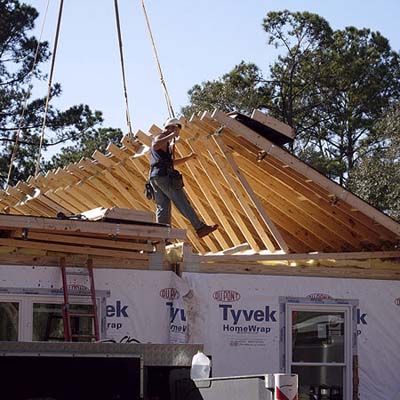
Once the two halves of the house are safely bolted in place on the foundation, the same crane helps unfold the roof, which rises segment by segment from its bed atop the house halves and is nailed in place by a professional crew as it goes. Most of the shingles are already in place, and the prebuilt gable-end framing is installed last. This way, a roof that would otherwise have taken days to build piecemeal is in place and weathertight in just a few hours.
9. Don’t forget your lunch money
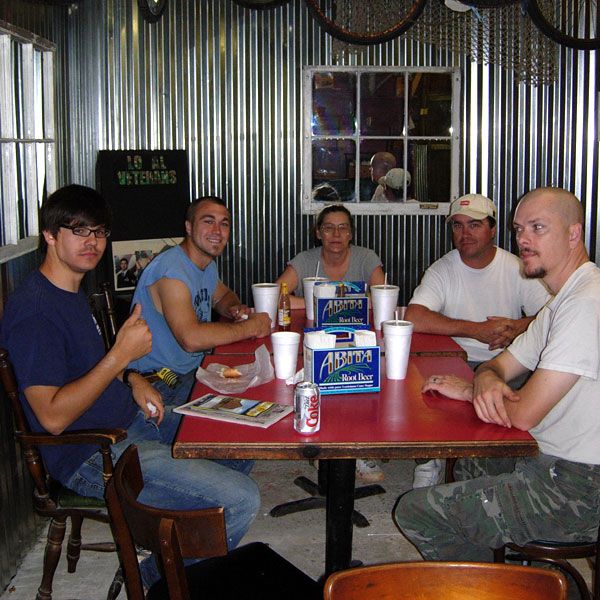
Of course the highlight of every day is…lunch! Muddy shoes and all, we piled into vehicles and went to the deli at Roche’s Grocery in Abita Springs. Volunteers at this site were responsible for their own lunch; at many Habitat group builds, a bag lunch may be provided. Our workday ran from 8am to about 4pm, which left some time to hop in my rental car to explore and pick a nice place for dinner—after a long, hot shower, of course!
10. Make new friends
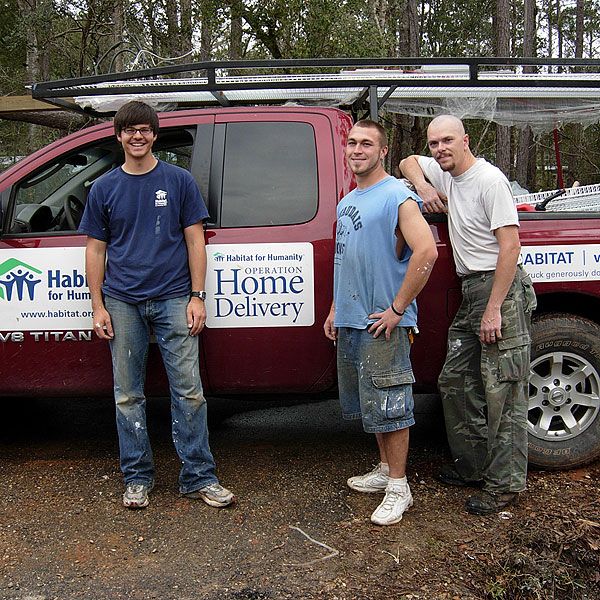
Some of my work buddies (left to right): Habitat construction supervisor Ben Bigler, construction supervisor/homeowner Zack Dazet, and homeowner Gene Johnston. Zack and Gene’s families will be next-door neighbors when the project is finished. All the homeowner/partners, who must contribute a specified number of volunteer hours, will have been working together for many months by the time they move in, and there’s already a palpable sense of community among them.
11. You don’t have to rough it
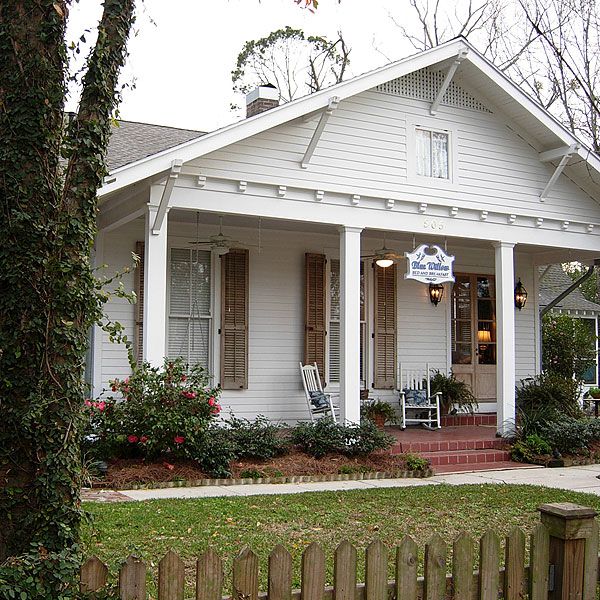
My home base for the week was the Blue Willow Bed & Breakfast in charming downtown Covington. Because the local HFH affiliate did not have accommodations available for individuals, only for larger groups, I splurged on a lovely room here. So if you’re thinking about pitching in but aren’t the everybody-in-a-bunkhouse sort, going with a bed & breakfast helps you feel like you’re being taken care of as you’re helping others.
12. Remember what it’s all about
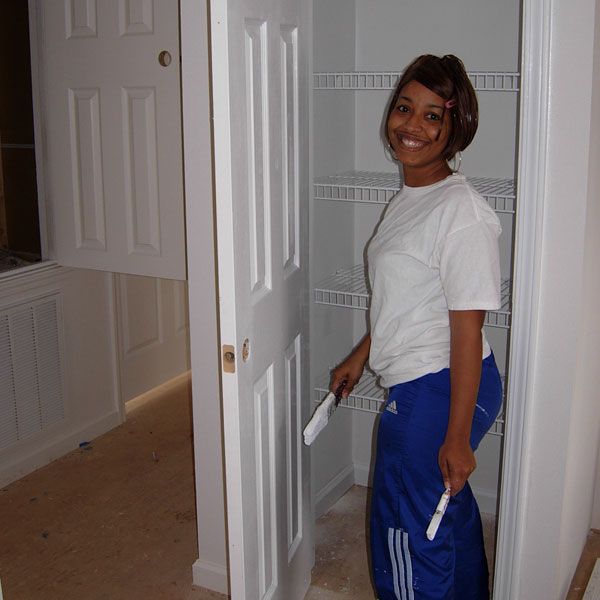
Habitat homeowner Jarvia Robinson paints her kitchen pantry door. HFH is a hand up, not a handout: Homeowners must demonstrate ability to repay their low-cost mortgage. Additionally, they contribute hundreds of hours of sweat equity and attend classes including construction, landscaping, and financial management. This house is nearing completion, so Jarvia and her family are excitedly looking forward to the day they finally get the keys. I won’t be there for the ceremony, but I’m glad I got to be a small part of their journey home.
